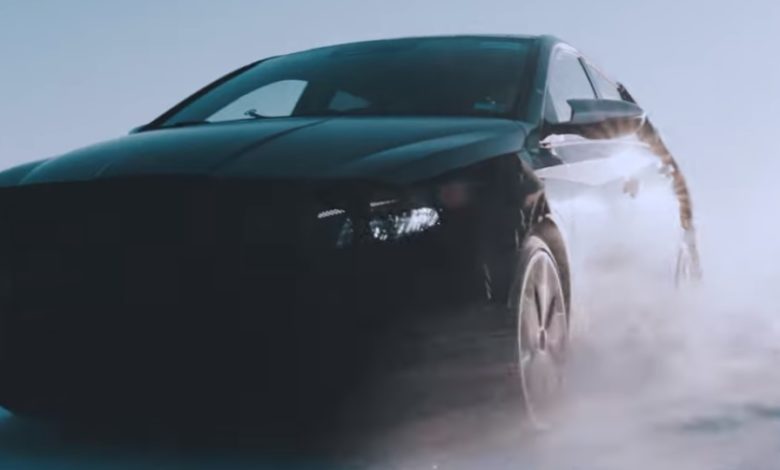Its about time time India gets its hot hatches
India has been a BIG follower of the SUV obsession in the world. Rather, Indian customers have been giving up quality and safety for an inexpensive and fuel efficient vehicle. Hence, there has been a constant yearning for affordable high performance cars. But, owing to the recent shift to safety, quality and better engines, we think India is ready for hot hatches.

By an affordable high-performance vehicle, we obviously mean a hot hatch. Not those variants that only have the cheap plastic cosmetic upgrades but, those well tuned and turbocharged variants of a normal hatch. Some aggressive aero, a stiffer suspension, better handling and wider tires translates to a serious performance vehicle that doesn’t cost a lot and is as practical as its normal variant.
Whenever an automaker in India has presented the people with an opportunity to own a high performance hatchback with most of the above present, people have often looked the other way. They joined the masses in buying the normal one. And mind you, this ‘normal’ variant is not that much cheaper than the performance variant, but seldom would you see these ‘hot hatches’ on the road. (I mean hot selling hatches). The worst part is that the diesel variant of a hatchback like the i20 or the Altroz costs significantly more than the petrol one. So, a performance version would be just over Rs. 1.5 lakhs above the top diesel variant, if priced correctly.
It’s not that people aren’t interested. The Tiago and Tigor JTP did pretty well for themselves but again, little enthusiasm from the brand, limited dealer availability and the service/maintenance wasn’t that good. And when the brand shows interest and enthusiasm, they demand unreasonable prices. Enter VW . What were they thinking pricing a Polo GTi at Rs. 25 lakhs? Most hot hatches are then offered with extreme discounts to clear the stock which means that dealers sometimes bear losses on these. So, no dealer wishes to buy them again and the brand kills it altogether for us. Vehicles built for an auto enthusiast very rarely find a following in our country, but I feel (and hope) that this is set to change in the coming future.
Let’s get down to the basics for those compatriots who are not familiar with the idea of a ‘hot hatch’. A hot hatch is a normal practical hatchback which has been tuned to a more sportier setting. This allows the vehicle to be more accustomed to hard accelerations on the straights, in corners or uphill without making you feel that you’re losing control. Driving a hot hatch can add serious fun to your everyday commute on a dull traffic laden road . The engine notes are raspier, the torque kicks in quicker, the 0-100 mark is achieved faster and to balance it all, the brakes are more responsive.
It is feature loaded similar to the top trim of its normal variant. Basically, a hot hatch is the entire deal. Plus, cars like these are ideal for cities, as you can fit them in any parking, they have a great turning radius and they are just easier to drive. Of course, you have to pay a premium over the normal variant for all that you get but let me tell you, it is definitely worth it. Rather than paying Rs. 1 to 1.3 lakh more for the diesel, you should spend a little extra buying one of these. They give sports car feel but are still repairable at the same workshop as your normal car.
Okay, so now that you know what a hot hatch is, lets evaluate which hot hatches are available in India, and do they really live up to the ‘hot hatch’ image.
Volkswagen Polo GTI
The Polo GTI, was easily one of the most powerful hatchbacks in India. This was an enthusiasts choice, inside and out. The Polo GTI was a 2 door hot hatch, which was brought to life with a 1.8 TSI engine which produced 189hp. A 7 speed DSG was coupled with the engine, and as good as DSG gearboxes are, there has always been a certain fear of maintenance issues with the very same transmission as well. This engine was strong enough to push the car from 0-100 in a quick 7.7 seconds which makes it the quickest hot hatch in the segment.

What makes the Polo GTI different from other ‘hot hatches’ of India is the fact that the GTI is well built on the inside, and the outside as well. On entering this little powerhouse, you are greeted with chequered fabric seats, a functional yet well equipped infotainment system. Other than that, the cabin is very ‘Volkswagen’ and portrays a very upmarket feel. Although, the design is similar to a normal Polo which is bland.
On the outside, the GTI looks almost identical to the normal Polo. But for the ones who have sharp eyes, the body of the GTI does look sportier with sleek body lines making it different from the Polo. Furthermore, the GTI comes with these very sleek looking 17 inch (optional, 16 inch standard are offered) alloy wheels which sport red calipers which not only improves braking, but also provides the vehicle with an even sportier look. A simple way of differentiating the GTI Polo and the Polo is by spotting the GTI tag which has been placed on the front grille, on the side body, on the rear. Oh and it only has 2 doors.

The GTI excels in all driving departments, whether it is the ride, handling, braking, safety, and power, lots of power whether it is low end, stronger end and top end torque range. The bad part? Its price tag. It was as much as Rs 19.99 lakhs during stock clearance. Originally it was priced around the Rs. 25 lakh mark. For context, the Merc A-class was priced at around the same. Heck, the Golf GTi which is the big brother to Polo GTi costs around Rs. 24 lakh in the US and that car is a MONSTER underneath. You get my point! As upsetting as it was to see this one go, I myself wouldn’t recommend this over a Mini or a Skoda Octavia, Hyundai Elantra, some other SUV’s, etc. The idea of a hot hatch is to provide that performance at an affordable price, key word affordable!
The Fiat Abarth Punto
Writing about this almost breaks my heart, because I truly loved this hatchback. Unfortunately, the sun set upon this one as well. On launch this was one of the most powerful hatchbacks available in the segment. Available for under the Rs. 15 lakh mark, this was a true hot hatch that didn’t break the bank. The Abarth Punto was a winner in almost all categories, the power train, stability, braking, build quality, all check. It was so good that this one inspired other automakers to follow and make their own hot hatches. It indeed was India’s true hot hatch.

The Abarth was powered by a 1.4 litre turbo petrol engine which generated 145 hp. Mated to a 5 speed manual without an automatic offering, it was certainly a miss. But, enthusiasts wouldn’t mind a manual only, manual gearbox was known to be quite slow to shift. Barring the gearbox, Fiat did well in building the car, at least with respect to the engine dynamics.

In terms of looks, the Abarth sports the trademark ‘scorpio’ emblem on the roof of the car, which just looks splendid. Furthermore, the vehicle uses 16 inch alloy wheels, which accentuates the sporty aspect of the vehicle while giving an amazing driving experience. The Abarth Punto accelerates from 0-100 in just 8.8 seconds, making it one of the fastest vehicles in its segment. The Abarth failed in 2 main fields, the transmission and the second being sales, and it was because of this reason that Fiat pulled out the Abarth, and soon the Punto as well.
The Baleno RS
This was Maruti’s first legitimate ‘hot’ hatch in India, but it was strictly a hot hatch look alike at most. Maruti took their Baleno, plonked a 1.0 booster-jet engine which made for some fun driving, and there you have our very own Baleno RS. Apart from this engine, and a few sporty bits, there was not much about the car that makes it hot hatch like.
The 1.0 Booster jet produced 101 hp and this engine was coupled with a 5 speed manual This engine had almost no turbo lag during the mid range. Maruti did not give the Baleno an RS tag just because of the engine, the RS sports disc brakes on all 4 tires, which made it the first hatchback in its segment to have such a kind of brake set up. And with this, the RS defining features of the vehicle have ended.

Many owners have complained that the RS’s engine feels de-tuned, and it is true, Maruti have actually de-tuned the engine, to ensure ‘fuel efficiency’. This is THE craziest thing I have read in a very long time, and why am I even surprised? This is a brand which literally made advertisements about their car owners asking for fuel efficiency of a yatcht. Clearly, Maruti didn’t get the memo w.r.t. a ‘hot hatch’.

The RS hit the 100 km/hr from naught in a lazy 11 seconds, which makes it the slowest hot hatch in the segment. Maruti was surely capable of making a faster vehicle here, but they have literally chosen to not do so, and this proves that a mass producer brand like Maruti would not care to make a true enthusiasts vehicle. This hurts more considering the Swift RS sold in Europe is one of THE most fun hot hatches out there.
Priced at 8.44 lakhs, the Baleno RS way not strictly a hot hatch, but it did give the hot hatch look with the blacked out alloy wheels which it sported. Very much like the above mentioned hot hatches, the Baleno RS also did not live long, and soon ended up being scrapped.
Tata Tiago JTP
The Tiago JTP is the most recent hot hatch whose plug has been pulled, and many auto car communities have actively shared their disdain about this. The Tiago JTP looked like a regular Tiago on steroids. But, unlike many past attempts (like Maruti Swift RS) it was done so very tastefully. The JTP was powered by Nexon’s 1.2 turbo petrol engine, but as this was a JTP, it was made 4 PS more than that of the Nexon, making a total of 112 bhp. However, the torque rating of the Tiago is lesser than that of the Nexon, and this decrease in torque happens because the Tiago uses a 5 speed gearbox as that of the Tiago, and not the Nexon. The JTP accelerated from 0-100 in just 9.35 seconds. I was wondering what and how they did it but then I saw the Jayem Tata Performance badge and I knew what went there.

The JTP after the Abarth is the most powerful hot hatch in India and it is almost half the price of the Abarth. I am very proud of Tata for making a product like this. Tata’s recent makeover was very evident in this vehicle and just when on to show that they’re getting more consumer focused with their designs as well. Unlike the Baleno RS which is more or less a cosmetic upgrade, the JTP sees an upgrade in the power train, ride and handling and if you have the skills, you could throw this car around in tight corners without coming out in pieces.
The JTP also has an audible advantage over its rivals, the exhaust note of the JTP is rather sporty. The interiors of the JTP continues to show the exuberant sportiness of the car. The seats have red stitching, while the dashboard gets an all black theme with the A/C vents having red accents. The instrument cluster of the vehicle also sports the JTP tag to remind you that this is hot hatch.

On the outside, the JTP uses blacked out grills on the rear and the front, and the lack of chrome is actually a great move by Tata. The headlamps of the sporty Tiago have been modified from the normal Tiago and they have done so by projector headlamps, which look absolutely fantastic.

The Tiago and its sibling the Tigor both received the JTP variant, but last month, Tata decided to kill off the JTP performance brand, and I do hope that Tata resurrects it in the coming future. The JTP was priced very economically at around 6.69 lakhs and unlike the other hot hatches, the JTP did garner a decent amount of sales. If you compare HP per Rupee, you’ll be shocked with how ahead the Tata is of the pack.
Future additions
I will not say that the masses in India are particularly fond of hot hatches, but the community of hot hatch fans is steadily growing. This could eventually lead to automakers bringing their hot hatches to India. It is entirely possible that hot hatches like the Hyundai i20 N and the Tata Altroz Sport could grace our country in the coming months, and when they do, they would surely make things very much difficult for the rivals. Currently there are no hot hatches available in the Indian market.
Owing to VW’s sales in India, I do not expect them to launch the GTi Polo anytime soon. The plans for a new gen Polo have already shifted quite far with the pandemic hitting. What I expect is from Tata, Hyundai and Kia. Tata’s JTP models sold pretty good and were loved by all. Hyundai and Kia’s turbo variants in the Venue, Seltos, Creta and the upcoming Kia Sonet are proof of gthe potential market they see. In fact, these variants are actually selling and trust me, the Koreans are not kidding with these engines. The Kia Stinger in US proves Kia’s ability in the market and Hyundai’s N-line has been giving sleepless night to Ford’s RS and VW’s GTi. Needless to say, I am very excited for the new i20 and a potentially i20-N and the Kia Rio with the same sport variant.
So to Hyundai and Tata I say this, seize the opportunity, and bring these high performance hatches to India, price them competitively and voilà, sales galore. It is not even about the sales anymore. The fact that a brand makes a hot hatch available in India grows a following of its own that tends to follow them around for all segments. Eventually, they sell a higher number of cars. India as a country has for many years been a market for conventional vehicles. But that ideology is changing quickly and I believe that in a few years, India will be a market for hot hatches.




